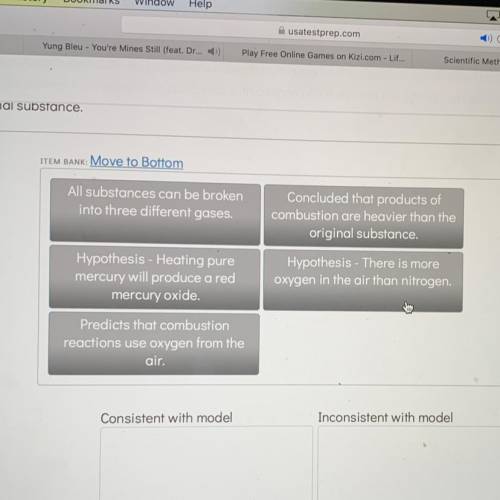
Biology, 04.02.2021 03:50, emaliemcfalls1234
Antoine Lavoisier performed his classic twelve-day experiment in 1779 which has become famous in history. First,
Lavoisier heated pure mercury in a swan-necked retort over a charcoal furnace for twelve days. A red oxide of
mercury was formed on the surface of the mercury in the retort. When no more red powder was formed, Lavoisier
noticed that about one-fifth of the air had been used up and that the remaining gas did not support life or burning.
Lavoisier called this latter gas azote. (Greek 'a' and 'zoe' - without life). He removed the red oxide of mercury carefully
and heated it in a similar retort. He obtained exactly the same volume of gas as disappeared in the last experiment.
Lavoisier's experiments use the scientific, method of finding out the nature of an unknown substance by analysis,
breaking down, and synthesis, and then building it up again from its constituents. In his experiments Lavoisier
separated air into two constituents: the one which supports life and combustion, and is one-fifth by volume of air he
called oxygen, the other four-fifths which is now called nitrogen. From the two gases he synthesized something that
has the characteristics of air. Lavoisier's experiments gave us the theory of combustion as we have it to this day: that
when a substance burns in air, it combines with oxygen of the air and the product of combustion is heavier than the
original substance.


Answers: 1
Other questions on the subject: Biology

Biology, 21.06.2019 15:30, Ostritch8336
Describe pasteur’s results and how they disprove spontaneous generation.
Answers: 2


Biology, 22.06.2019 10:50, isabelgarcia188
The small molecule cyclic amp (camp) takes about 0.2 second to diffuse 10 μm, on average, in a cell. suppose that camp is produced near the plasma membrane on one end of the cell; how long will it take for this camp to diffuse through the cytosol and reach the opposite end of a very large cell, on average? assume that the cell is 200 μm in diameter.
Answers: 1
Do you know the correct answer?
Antoine Lavoisier performed his classic twelve-day experiment in 1779 which has become famous in his...
Questions in other subjects:


Physics, 28.09.2019 18:30





History, 28.09.2019 18:30

Mathematics, 28.09.2019 18:30







